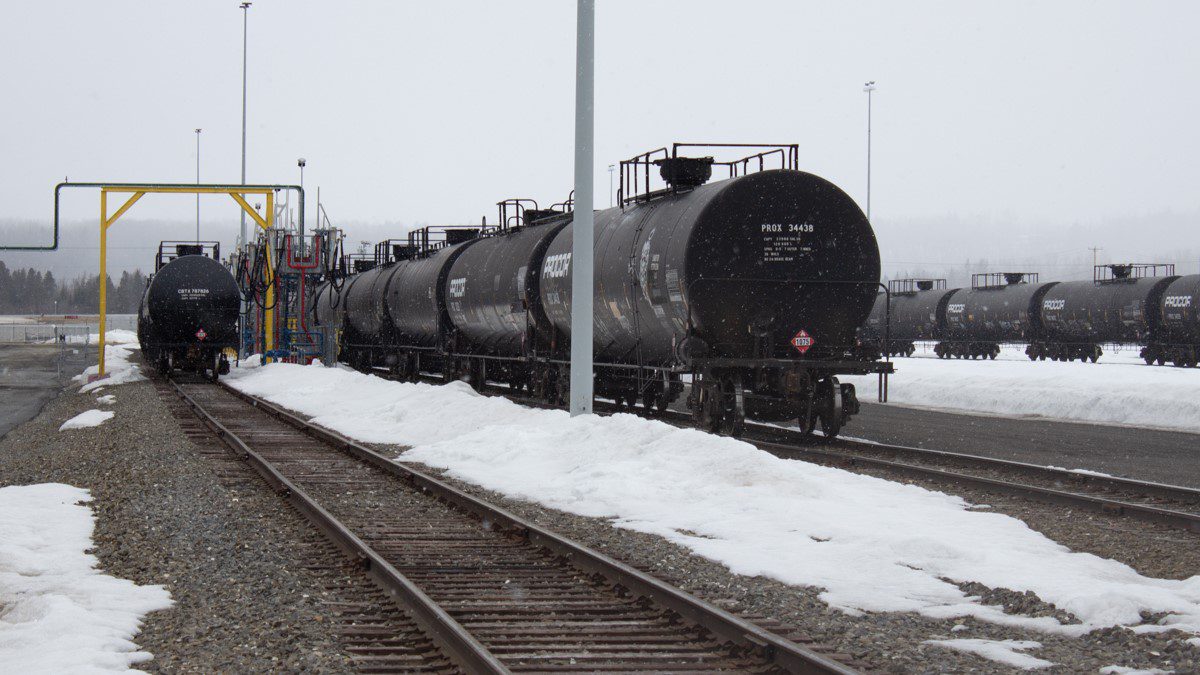Fuel oil is one of the most expensive, planet-warming and unpredictably priced ways to heat a home — yet three of every five Mainers use it, more than any other state. Moving Maine off oil could have big benefits, as was reported in our series Hooked on Heating Oil.
But where do you start if you want to make that change in your home? You should be thinking about that now — yes, in these hot summer months — to prepare for the cold we all know is coming.
If you haven’t read part one of our guide yet, do that first! It focuses on energy efficiency — ways to cheaply upgrade your home to need less heat altogether.
As one low-income energy aid provider told us in an earlier part of our series, “Weatherization is at the very top.”
Above all, seek out a home energy audit, and consider air sealing, new doors and windows, or a new efficient furnace — all supported by state and federal government rebates and tax credits. For people with certain income levels, these projects can even be free. And if you’re a renter, encourage your landlord to take these steps to help save you both money.
After doing the efficiency prerequisites, it’s time to consider alternate heating systems to reduce or eliminate your oil reliance. Read on for options and ways to save money:
Let’s talk about heat pumps
These efficient electric systems are your heater and your air conditioner in one. They’re the state climate plan’s preferred heating oil alternative, and they cost less than oil or electric baseboard heat in all but the most rare of cold temperatures — with increasing efficiency in cold weather as technology continues to improve.
Paired with efficiency upgrades, even one heat pump can be a transformative investment for many kinds of homes. Make calls to contractors to get a sense of the best kind of heat pumps for your house’s unique needs — whether it’s a single wall-mounted unit (sometimes called a mini-split or ductless heat pump) or a whole-home central heat pump system.
When you try to estimate your savings, don’t forget to include what you spend on cooling in the summer — heat pumps used for cooling are much more efficient than, say, a window-unit AC.
State heat pump subsidies for low- to moderate-income households: Homeowners who make about $40,000 a year or less for a two-person household — or any eligible for the Home Energy Assistance Program (federal heating aid, offered through community action agencies) — may be able to get a free heat pump through Maine Housing.
HEAP eligibility also means you can access Efficiency Maine’s lower-income heat pump rebate, but try the Maine Housing program first because that option will cover all of your purchase and installation costs, not just some.
You can also access Efficiency Maine’s low-income rebate if you’re eligible for another public assistance program like SNAP, TANF or MaineCare. Or you can qualify if your home falls below certain thresholds for assessed property values. You can’t access this rate if you already have a natural gas utility account. Check your income eligibility with Efficiency Maine.
The Efficiency Maine heat pump rebate for these income-eligible families is up to $2,000 for the first heat pump and up to $400 for a second. The model you buy must have an AHRI rating equal to or greater than 10.4 HSPF2 or 12.5 HSPF — a measure of efficiency and performance.
State heat pump subsidies for any-income households: These are for indoor heat pumps only. The state offers $800 for a first unit and $400 for a second, for the same levels of efficiency in the income-eligible rebates described above. For heat pumps with slightly lower ratings, it’s $400 for a first unit and $200 for a second.
Federal tax incentives for heat pumps: 30% of a project’s cost, up to $2,000 a year. You can get the credit multiple times for multiple heat pumps if you spread installations over multiple years. And remember to add on a new electrical panel for an additional rebate of up to $600 — see the first part of this guide for details.
Utility bill incentives for heat pumps: Central Maine Power and Versant Power offer discounted rates for heat pump users in the winter, among other electrification-related discounts. Contact your utility for details on how you can save.”
Is there any other funding that can help? Yes — Efficiency Maine offers low-interest home energy loans for income-eligible households of up to $7,500. At this time, borrowers must have a credit score of at least 580 and meet other requirements.
What about geothermal heat pumps?
The kind of heat pump you probably picture when you hear the phrase is an “air-source” heat pump, which uses outside air temperatures relative to the temperature in your home to exchange hot or cold air.
But a “ground-source” or geothermal heat pump, which typically regulates temperature by running water through underground coils, can be an even more efficient alternative.
In states like Maine, geothermal heat pump coils would more likely be buried at a relatively shallow depth, rather than in very deep high-temperature reservoirs like those in western states.
A 2011 state report supporting geothermal heat said the temperature of the soil 30 to 60 feet below Maine is typically in the 40s year-round. This provides a contrast to above-ground temperatures — indoors and outdoors — which can be used to run a heat pump in any season.
This technology is being installed at a multi-home scale — serving an entire neighborhood! — in Framingham, Mass.
It can be more expensive than traditional heat pumps for an individual homeowner, but is worth exploring for families or landlords with flexible budgets.
State rebates: Efficiency Maine will rebate one-third of a single geothermal system’s costs per housing unit, up to $3,000.
Federal tax incentives: 30% of a project’s cost with no cap on the total dollar amount. This is part of the Residential Clean Energy Tax Credit, which can also help pay for solar power, small home wind turbines, batteries and more.
What about wood?
The question of whether wood or oil is better in the climate change context is really complicated, as we reported earlier in this series. Emissions aside, wood has advantages.
It’s cheap — with an even more generous state rebate than most other heating technology — and typically produced locally, not imported like fossil fuels. Some wood-burning systems don’t need electricity, making them a resilient backup option for power outages.
Some vendors see heat pumps and a wood or pellet stove as a particularly good pairing. You can also use a wood-burning central boiler or furnace just like you would a central oil system. Wood pellets or chips stored in bulk and/or set to auto-feed into your heating system can make refueling easier. Ask a contractor what kind of wood heat might work for you.
State rebates: Efficiency Maine will rebate up to $6,000 to cover one-third of the cost of an efficient central boiler or furnace that burns wood pellets or cordwood.
There’s one other important caveat on this state funding — eligible systems must have enough capacity to run for up to two weeks without human intervention, meaning you don’t have to feed them daily. It also must help keep plumbing in your home at above 50 degrees for that same time period to help keep your pipes from freezing.
Federal tax incentives: 30% of a project’s cost up to $2,000 for any biomass-burning heat system above a certain efficiency level.
What are my other oil alternatives?
In general, investing extra heavily in energy efficiency or considering passive house standards can reduce your heating and cooling needs about as low as they’ll go.
Other carbon-based fuels: If you’re using kerosene, try to switch to slightly cheaper No. 2 fuel at a minimum. And ask your oil provider if you can use a plant-based biofuel, or a mix of biofuel and oil, in your existing boiler or furnace with minimal upgrades.
Consider a tank of propane instead of a tank of diesel or kerosene. Propane is cheaper and generates relatively lower emissions than oil, but it’s still a fossil fuel and requires delivery. Fewer Mainers than in almost any other state have access to home natural gas service, but that’s also an option for those in more densely populated parts of southern Maine.
Solar heating: These systems use panels on the outer walls of your home to collect heat. They require an up-front investment but can be one of the cheapest heat options long-term because they have basically no ongoing operating costs once they’re installed.
Radiant heating: These efficient systems use electrical elements or pipes of water to distribute heat through, typically, the floors of your home.
Other electric heat options: Electric baseboards are not recommended because they’re likely to be more expensive even than your heating oil. If you’re thinking about a baseboard for space heating, consider talking to a contractor about your options for a mini-split heat pump instead.
You can install home solar, a battery or even wind energy to help offset your electricity costs and get more out of electric heating systems. The aforementioned tax credit can help.
How do I know which fuel to use in different weather conditions to save the most money and energy?
You can look up the temperatures in your area year-round to get a sense of what fuels will be the most efficient for your home climate — here are the records for southern, central and western Maine, and for northern and eastern Maine.
But keep in mind that climate change is increasing extreme and unusual temperatures on both ends of the spectrum. Yet again, this is where efficiency becomes the most important step — a well-sealed home will need less extra heat as temperatures fall, for example.
Heat pumps are a good choice even in places that get very cold, but can do well with a backup system like a pellet stove to lower operating costs when temperatures get into the teens or lower.
A contractor can help you decide what pairing of systems is right for you. See our earlier story for charts from Minnesota assessing the costs of certain “switchover” temperatures.
I made the switch! How do I get my old oil boiler out of there?
My colleague Kate Cough went on this adventure not long ago and wrote about it for our Climate Monitor newsletter.
Happy heating!
Correction: Because of reporting errors, an earlier version of this story mischaracterized Versant Power’s discounted rates for heat pumps and other home electrification upgrades. The Monitor regrets the error.
This story is supported by the MIT Environmental Solutions Journalism Fellowship.







